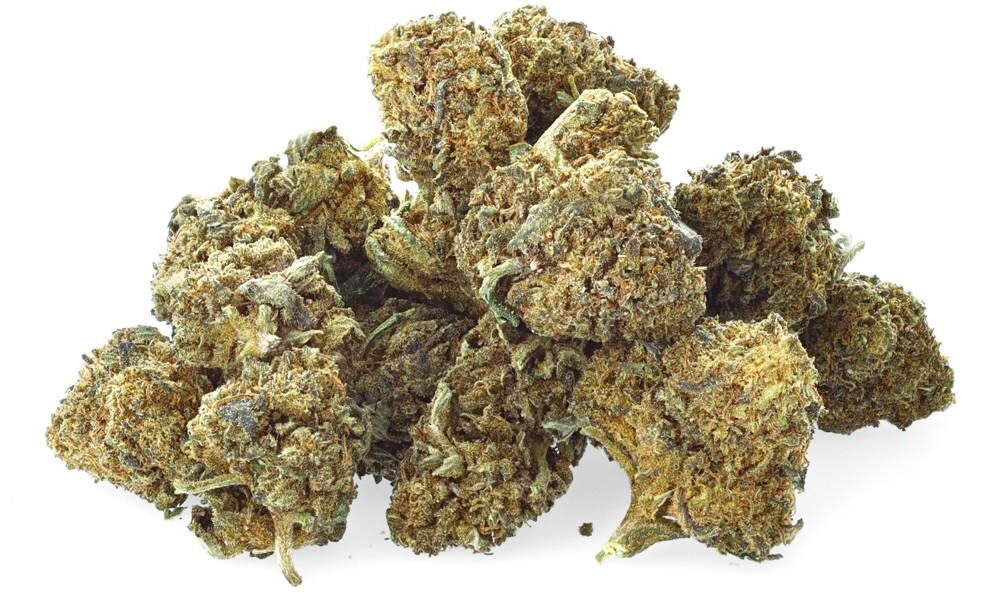In a world where cannabis has transitioned from taboo to mainstream, the conversation around its effects has never been more pertinent. As legalization sweeps across various regions, individuals find themselves asking a crucial question: “Is weed harmful?” This exploration delves into the multifaceted nature of cannabis, examining both its potential benefits and pitfalls. From the perspective of medical research to anecdotal experiences, we uncover the layers of this complex plant. Join us as we navigate the terrain of cannabinoids, societal perceptions, and the balance between recreational enjoyment and health implications, seeking clarity in what can often feel like a haze of conflicting information.
Table of Contents
- Understanding the Potential Risks of Cannabis Use
- Exploring the Impact of Weed on Mental Health
- Evaluating Physical Health Consequences Linked to Marijuana
- Navigating Responsible Use: Best Practices for Consumers
- Q&A
- To Conclude
Understanding the Potential Risks of Cannabis Use
The use of cannabis, often perceived as a harmless recreational activity, can carry various potential risks that warrant careful consideration. While some users may appreciate the euphoric effects and potential therapeutic benefits, it is essential to acknowledge the possibility of adverse outcomes. Physical health issues may arise, including but not limited to:
- Respiratory problems from smoking
- Increased heart rate, which can strain the cardiovascular system
- Risk of cannabis use disorder
Additionally, the psychological impacts of cannabis can be significant, particularly for vulnerable individuals. Mental health concerns linked to cannabis use include:
- Increased anxiety or paranoia
- Exacerbation of pre-existing mental health disorders
- Possible development of psychosis, particularly in those with a predisposed risk
Understanding these potential risks helps individuals make informed choices about their cannabis use, balancing its appeal against the possibility of adverse effects on their health and well-being.
Exploring the Impact of Weed on Mental Health
The relationship between cannabis use and mental health is a complex and multifaceted issue that warrants careful consideration. While some individuals report positive effects such as enhanced mood and anxiety relief, others may experience adverse reactions that can exacerbate pre-existing conditions. Factors such as dosage, frequency of use, and individual susceptibility all play significant roles in determining the mental health impact. It’s also important to recognize the distinctions between different strains of cannabis, as varying THC and CBD levels can lead to diverse psychological outcomes. Here are some potential impacts:
- Increased anxiety and paranoia: High THC concentrations may trigger feelings of anxiety or paranoia in some users.
- Altered perception: Cannabis can change one’s perception of reality, which may lead to heightened feelings of confusion or disorientation.
- Potential for addiction: Regular use can lead to dependence, with effects on mental health that mirror those of other addictive substances.
- Therapeutic benefits: For certain individuals, particularly those with PTSD or chronic anxiety, cannabis can serve as an effective therapeutic tool.
Research indicates that the impact of cannabis on mental health may also be influenced by external factors, including social environment and personal history. Adolescents and young adults, in particular, may face heightened risks as their brains are still developing. Recent studies have explored how a history of mental health issues could interplay with cannabis use, suggesting that individuals with existing vulnerabilities could be more susceptible to negative effects. Below is a summary of research findings connecting cannabis use and mental health:
| Study Focus | Key Findings |
|---|---|
| The Effects of THC on Anxiety | High doses can lead to increased anxiety in some individuals. |
| Cannabis Use in Adolescents | Increased use correlates with higher rates of depressive symptoms. |
| Benefits of CBD | CBD is shown to reduce anxiety symptoms without psychoactive effects. |
Evaluating Physical Health Consequences Linked to Marijuana
As marijuana continues to evolve in terms of legality and cultural acceptance, understanding its physical health consequences remains crucial. Research indicates various outcomes of marijuana use, particularly emphasizing its effects on respiratory health, cardiovascular systems, and overall physical performance. Key considerations include:
- Respiratory Impacts: Inhalation of marijuana smoke can lead to bronchial irritation, cough, and potential long-term lung function decline.
- Heart Rate Variability: Using marijuana can elevate resting heart rate, which may pose risks for individuals with pre-existing heart conditions.
- Appetite Changes: While marijuana is known to stimulate appetite, it can also lead to unhealthy eating patterns and weight gain over time.
Furthermore, the interplay between marijuana use and physical activity presents an interesting perspective. While some users report enhanced enjoyment during physical activities, others experience impaired coordination, impacting exercise performance. The following table outlines these contrasting perceptions of marijuana’s influence on physical health:
| Perceived Influence | Effects on Physical Activity |
|---|---|
| Positive | Increased enjoyment, reduced anxiety |
| Negative | Impaired coordination, reduced stamina |
Navigating Responsible Use: Best Practices for Consumers
As consumers explore the complexities surrounding cannabis use, it’s essential to approach this journey with awareness and responsibility. Understanding personal limits is crucial; everyone reacts differently to cannabis, influenced by factors such as body weight, metabolism, and tolerance levels. Listening to your body and recognizing when to pause or stop consumption can mitigate potential adverse effects. Additionally, maintaining an open dialogue with friends or healthcare professionals can provide insights and support, creating a more informed and safer experience.
Adopting safe consumption practices can elevate the enjoyment of cannabis while minimizing risks. Here are some best practices to consider:
- Choose products from reputable sources to ensure quality and safety.
- Start with a low dose and increase gradually to monitor your response.
- Avoid mixing cannabis with alcohol or other substances.
- Be mindful of the legal regulations in your area to avoid unintended consequences.
- Consider using cannabis in a comfortable environment, preferably around trusted friends.
Here’s a quick overview of some common cannabis products and their THC content:
| Product Type | Average THC Content (%) |
|---|---|
| Flower | 10-30 |
| Edibles | 5-20 |
| Concentrates | 50-80 |
| Tinctures | 10-30 |
By engaging with these practices mindfully, consumers can enjoy a more balanced relationship with cannabis, ensuring that their experiences remain both pleasurable and responsible.
Q&A
Is Weed Harmful? Your Questions Answered
Q: What is marijuana, and why is it so widely discussed?
A: Marijuana, often referred to as weed, is a plant that has been used for centuries for medicinal, recreational, and industrial purposes. Its psychoactive properties are primarily attributed to the compound THC (tetrahydrocannabinol). As more regions legalize its use, discussions around its benefits and drawbacks have intensified, leading to a vibrant debate regarding its potential harm.
Q: What are the potential benefits of using marijuana?
A: Proponents of marijuana use argue that it can provide relief for various medical conditions, including chronic pain, anxiety, and nausea associated with chemotherapy. Some studies suggest that cannabidiol (CBD), another compound found in cannabis, may help reduce seizures in epilepsy and alleviate symptoms of certain mental health disorders. However, these benefits are often contextual and can vary significantly between individuals.
Q: Is there evidence that marijuana is harmful?
A: Yes, there are several potential risks associated with marijuana use. Studies have shown that regular, heavy use can lead to cognitive impairments and a decline in academic performance, particularly among adolescents. There’s also evidence linking marijuana use to mental health issues, such as increased anxiety, depression, and a potential higher risk of developing psychotic disorders, especially in those with a family history of such conditions.
Q: How does marijuana affect physical health?
A: Inhalation of marijuana smoke can have negative effects similar to tobacco smoke, potentially harming lung health over time. Additionally, some users may experience increased heart rate and, in rare cases, complications in cardiovascular health. However, proponents argue that when used responsibly, especially in non-inhaled forms, the risks can be mitigated.
Q: Can marijuana lead to addiction or dependency?
A: Yes, marijuana can lead to what is termed Cannabis Use Disorder (CUD). According to research, approximately 9% of users may develop an addiction, with the likelihood increasing to about 17% for those who start using in their teens. Withdrawal symptoms can include irritability, insomnia, and decreased appetite, making it important for users to approach consumption mindfully.
Q: Are there specific populations that should avoid marijuana?
A: Individuals with a history of mental health issues, those at risk of developing such conditions, and pregnant or breastfeeding women are generally advised to avoid marijuana use. Adolescents are also more vulnerable to its negative effects due to ongoing brain development, making it critical for them to steer clear of regular consumption.
Q: Is there a middle ground in the marijuana debate?
A: Many experts advocate for a balanced perspective, recognizing that while marijuana can have therapeutic benefits, it is important to approach its use with caution. Advocating for informed, responsible use, alongside more research into the long-term effects, could lead to a deeper understanding of marijuana’s role in both health and society.
Q: What should I take away from this discussion?
A: The question of whether weed is harmful isn’t black and white. Like many substances, its effects depend on a myriad of factors including dosage, individual physiology, frequency of use, and the context in which it is consumed. Understanding both sides of the argument can help inform personal choices and foster thoughtful discussions around this multifaceted topic.
To Conclude
As we wrap up our exploration of the question, “Is weed harmful?”, it becomes clear that the answer is not as straightforward as a simple ‘yes’ or ‘no’. The complexities surrounding cannabis use—its potential benefits, legal status, social implications, and health effects—underscore the importance of a nuanced understanding. Just as with many substances, individual experiences vary, influenced by factors like dosage, frequency of use, and personal health.
In a world where conversations about cannabis continue to evolve, it is essential to approach the topic with an open mind and a critical perspective. By staying informed and prioritizing personal well-being, we can make choices that are right for us. As research progresses and social attitudes shift, the dialogue around cannabis will undoubtedly grow richer, inviting ongoing reflection and discussion. Ultimately, the understanding of whether weed is harmful may rest not only on scientific data but also on personal narratives and cultural contexts. So, wherever you stand in this conversation, remember: knowledge is key, and awareness paves the way for informed decisions.


